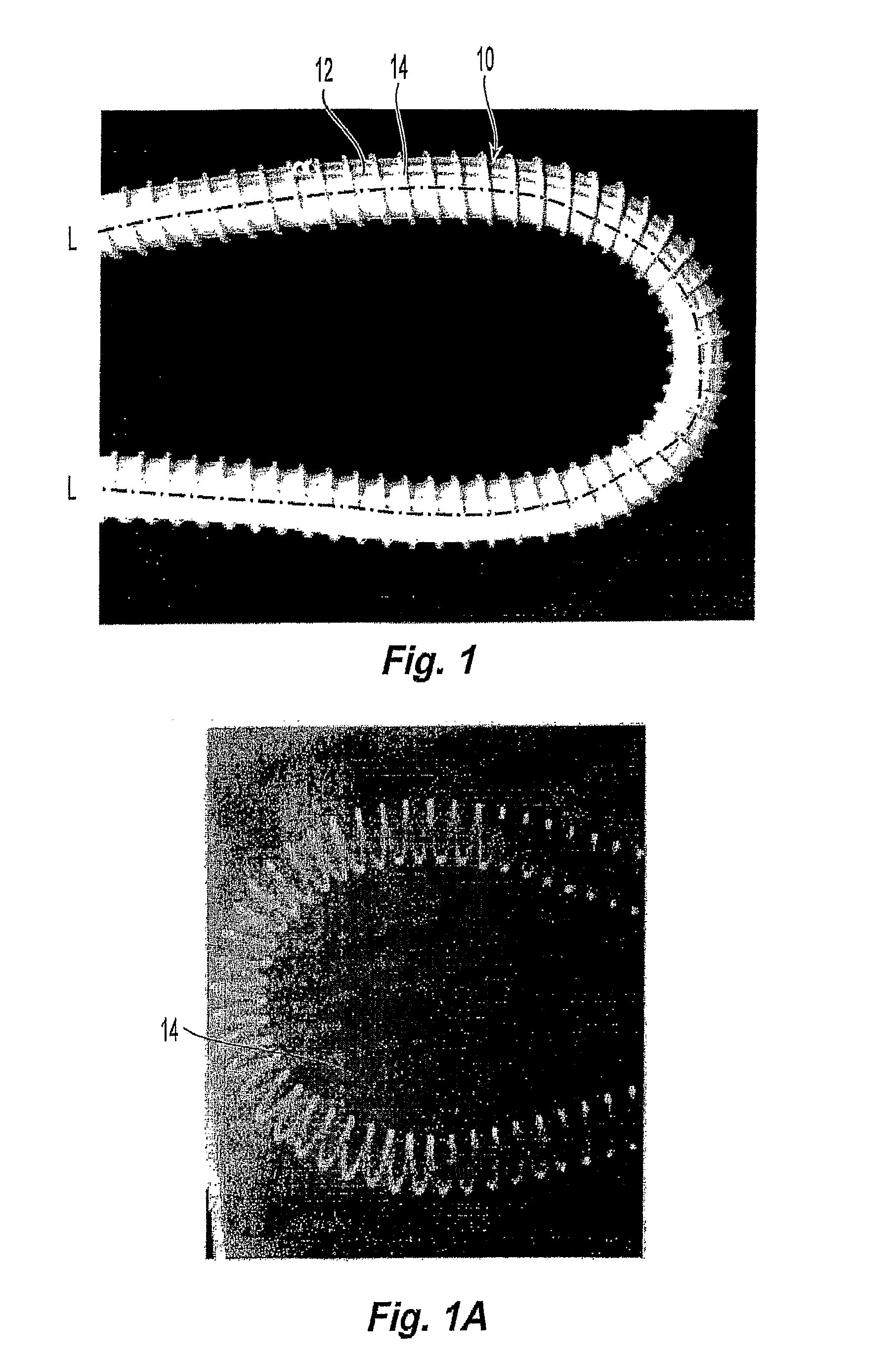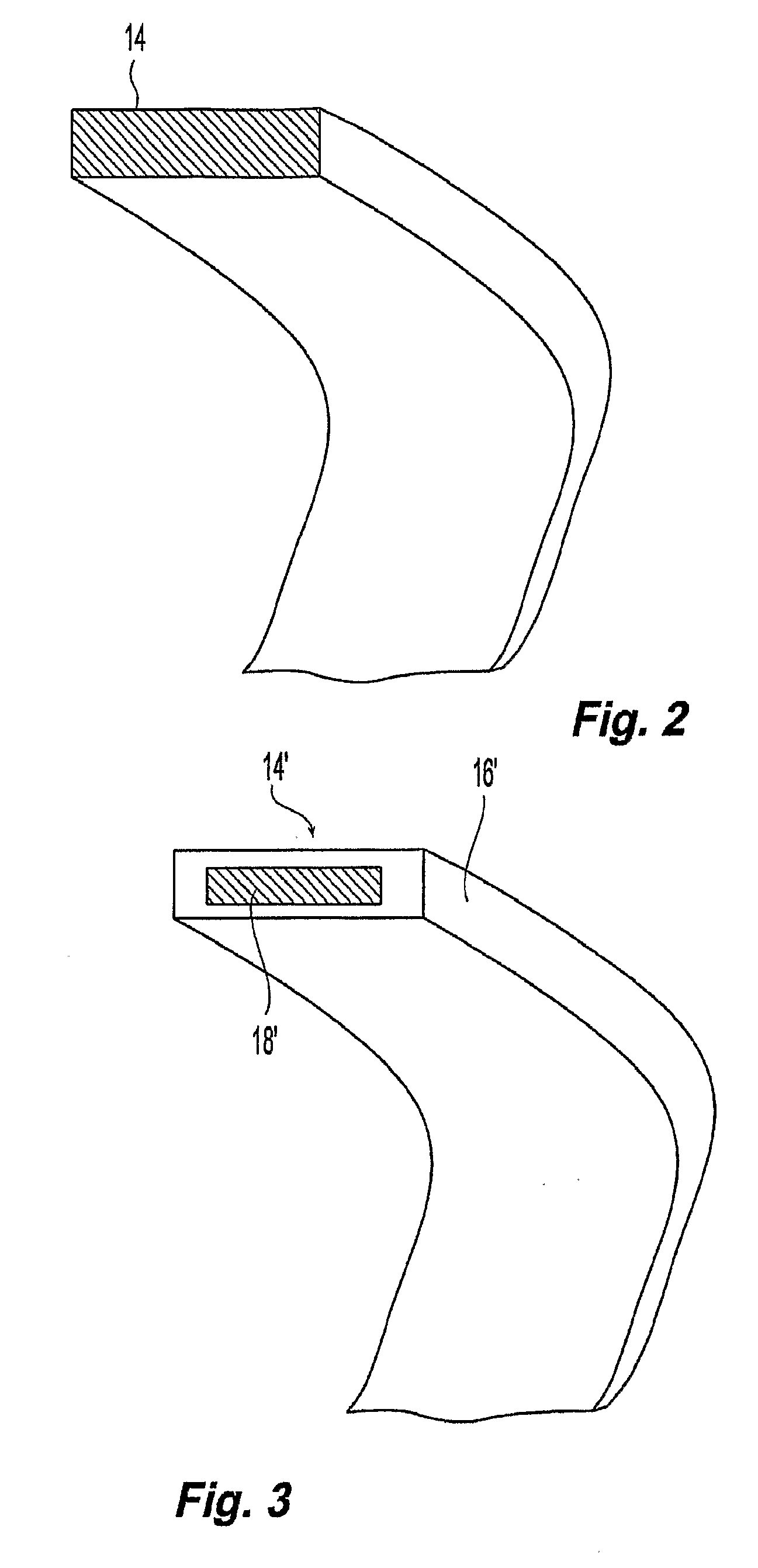Grafts and stent grafts having a radiopaque beading
a radiopaque beading and graft technology, applied in the field of medical devices, can solve the problems of complicated delivery procedure, kinking of grafts, and the need for additional means for anchoring grafts, so as to facilitate the operation of operator's vision, reduce kinking of grafts, and provide structural rigidity to implant devices.
- Summary
- Abstract
- Description
- Claims
- Application Information
AI Technical Summary
Benefits of technology
Problems solved by technology
Method used
Image
Examples
Embodiment Construction
[0033]FIG. 1 shows a preferred embodiment of a medical device implant 10 having an outer surface 12 and an inner surface (not shown). The device 10 is preferably a graft device and its outer surface 12 preferably defines a substantially tubular member about a central axis L-L of the device 10. Preferably, the device 10 defines a substantially circular cross-section perpendicular to the central axis, although other cross-sectional geometries are possible such as, for example, rectangular or oval. The device 10 is preferably configured for migration through a blood vessel to engage, for example, a stenosis. Alternatively, the device 10 can be substantially spherical or any other geometry appropriately dimensioned for implantation and migration in blood vessels or other tissue. Exemplary graft devices 10 include IMPRA CARBOFLO® and CENTERFLEX® by Bard Peripheral Vascular, Inc., Tempe, Ariz.
[0034]Disposed or coupled to the outer surface is a beading 14. “Beading” as used herein means a ...
PUM
 Login to View More
Login to View More Abstract
Description
Claims
Application Information
 Login to View More
Login to View More - R&D
- Intellectual Property
- Life Sciences
- Materials
- Tech Scout
- Unparalleled Data Quality
- Higher Quality Content
- 60% Fewer Hallucinations
Browse by: Latest US Patents, China's latest patents, Technical Efficacy Thesaurus, Application Domain, Technology Topic, Popular Technical Reports.
© 2025 PatSnap. All rights reserved.Legal|Privacy policy|Modern Slavery Act Transparency Statement|Sitemap|About US| Contact US: help@patsnap.com



